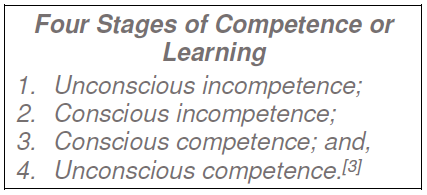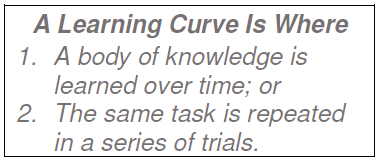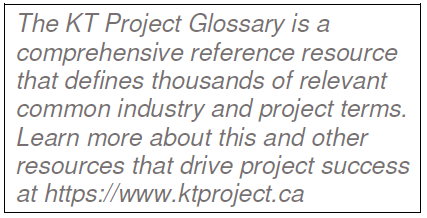Is Your Project Using the Master Keys to Success?
Words are the master key to successful communication. Communication is the master key to successful projects.
According to the article What Are the Causes of Communication Failure?, three (of four) causes of communication failure are related to the use of language:
- When something obvious to you may not be obvious to others and their confusion is overlooked (assumed perspective or understanding);
- When the receiver misses critical information or tunes out due to boredom or personal bias (misunderstanding or opposition); and,
- When words are inappropriate for the audience or subject, especially with the use of imprecise or vague terms, or technical jargon (ambiguity or lack of clarity).[1]
Words are the master key to successful communications.
Related: Successful Projects Need Effective Communication.
Over 10 years, Orgmetrics asked 134 project teams two questions about their experience with project failure and success:
- What makes a project fail? 98% said communication!
- What makes a project succeed? 95.5% said communication![2]
Communication is the master key to successful projects.
There are many aspects to successful communication. A Google search yields thousands of useful resources. These resources include subjects ranging from emotional intelligence to soft skills, to topics about improving meeting, speaking, and writing abilities. By contrast, this article focuses on one specific aspect of communication and language: the terms and words we use to communicate and miscommunicate.
This article discusses common sources of miscommunication, including:
- Unconscious incompetence;
- Steep learning curves; and,
- Different understandings and uses of industry and project terminology.
This article also describes:
- The importance of clear communications;
- How you can use the master keys to generate success for your project; and,
- The KT Project Glossary.

1. Unconscious Incompetence
One of the root causes of poor project communication is unconscious incompetence. Put simply, this means that personnel simply don’t know what they don’t know. Unconscious incompetence is the first of four stages of competence or learning (see inset for a description).
This relates to the process of progressing from incompetence (lack of knowledge) to competence (retention of knowledge) when applying or employing a skill. In the context of industry or a project, personnel at this stage are likely to make mistakes and be unaware of these mistakes or their impact on other personnel and processes. For example, a new staff member in Stage 1 performs a calculation but uses an incorrect formula to determine the solution. As a consequence, the project purchases pipe that is the wrong thickness. This results in an avoidable expense, unnecessary schedule delays, and the installation of incorrect pipe. Unconscious incompetence is particularly applicable to beginners and inexperienced personnel.

2. Steep Learning Curve
A learning curve is the rate at which personnel progress in gaining experience, knowledge, or new skills (see inset for a description). Beginning and inexperienced personnel can face a steep learning curve.[1] During this time, personnel need close supervision. Generally, they need to be told what to do, how to do it, and be provided with many details. Lastly, personnel require frequent verification of their production levels and progress. Some recruiters are reluctant to hire personnel with transferrable skills because, while their skills may indeed be transferrable, their limited industry-specific vocabulary may be a factor that cannot be overcome quickly enough to accommodate project requirements.
A steep learning curve is a primary reason personnel struggle when transferring into a new company, industry, project, or role – each of which may use terminology that is the same, similar, or different. All personnel experience a similar learning curve during the transition from beginner, to novice, to subject matter expert, to technical authority (and beyond). This transition is especially challenging for personnel who:
- Use English as a second (or third or fourth) language;
- Have experience, but need to clarify or confirm their understanding or the understanding of others; or,
- Have transferred into a new company, industry, project, or role.
3. Same Terminology, Different Meanings? A Recipe for Disaster!
Some industries and projects use the same terms and words interchangeably to describe various activities and functions. This is not recommended; different terms have different meanings. Also, some industries and projects use different terms to mean the same (or a similar) thing. Confusing? Absolutely! How could it not be? But how can this be addressed?
The lack of precise communication can be costly and even mission-critical. For example, in 1998, the NASA Mars Climate Orbiter disintegrated during orbit entry due to a communication error. A simple unit conversion mistake caused catastrophic mission failure and the loss of USD $327 million.[4] Don’t let your project’s success burn up during re-entry or fall victim to inferior communications!

Anyone with Internet access can search for a definition, but the results are often ambiguous, conflicting, confusing, not related to industry or not useful for projects. Thus, generally, information gleaned from the Internet does not provide consistent definitions nor usable data. For example, what is working on a spread? If you have never heard this before, it may be difficult to picture. The term spread (see inset for a definition) is specific to pipeline construction and the meaning is typically not known outside of the pipeline construction industry.
4. The Importance of Clear Communication Cannot be Understated
The point of clear communication is not to simply to avoid confusion or misunderstandings; instead, it is to continually improve and refine communication such that it becomes the engine that drives current project success. Ultimately, the goal is to provide an ever more efficient engine that drives project success for each future project. Without clear communication and continually improving communication, expect projects to experience negative consequences (e.g., increased costs, schedule delays, or worse).
The fundamentals of clear communication are crucially tied to project personnel understanding industry and project terminology (i.e., abbreviations, terms, and phrases). At first, it may seem that all personnel would have a reasonably similar understanding of project definitions. This is not the case at all, because:
- Most projects do not maintain a comprehensive database of precisely defined, current terminology. Thus, personnel have no standardized frame of reference.
- Overuse of similar terminology on multiple projects tends to confuse and cause misunderstandings (e.g., preferred terminology is not defined or used);
- Project personnel have diverse backgrounds and experience, this influences their understanding of the definitions of terminology;
- Projects can be complex, multi-disciplined, and involve different industries. In these cases and others, and by necessity, the same or similar terminology may require explicitly different definitions; and,
- Projects involved over more than one area, geographic region, or jurisdiction may use less specific or varying terminology definitions.
Unfortunately, the above is the nature of industry- and project-specific terminology. And this challenge must be addressed. If it is not, your project faces uncertain peril and unknown risk. Nevertheless your project can address this peril and risk. But how?
5. Using the Master Keys to Create Success for Your Projects
Imagine if your project had access to a critical resource that mitigates unconscious incompetence, helps flatten the learning curve, and provides communication clarity for personnel. KT Project documents define common language to provide assurance that your requirements are clearly understood and effectively communicated.
KT Project documents capture decades of subject matter experts’ valuable experience and knowledge, which will help your project eliminate, minimize and mitigate challenges caused by knowledge gaps and poor communication. This will save your projects significant time and money.
The KT Project champions the efficient and effective transfer of knowledge from subject matter experts to other professionals. KT Project resources can be used as-is, modified, or white labelled to suit your business and project needs. The KT Project can also define new or existing terminology required for your project.

6. The KT Project Glossary
One of the KT Project documents is KTP-GEN-002, Common Industry and Project Terminology (see inset). This glossary provides modern, precise definitions for thousands of abbreviations, phrases, and terms, including:
- Abbreviations and acronyms;
- Brand and proprietary names and trademarks;
- Company-, discipline-, industry-, and project-specific terminology
- Expressions, historical use of terms, etymology, and social influencers of jargon and slang;
- Phrases and terms used by third parties; and,
- Preferred and non-preferred terminology.
The KT Project glossary also includes links to over 50 documents that define terminology used by related industries and organizations.
The Master Keys to Project Success
Precise terminology is the master key to effective communication. Effective communication is the master key to the successful delivery of products and services. Use these master keys to unlock success for your project.
Note
This article was originally published on LinkedIn 8-Jul-19 https://www.linkedin.com/pulse/your-project-using-master-keys-success-roy-o-christensen-ret/ and in the Canadian Mining Magazine 30-Oct-19 http://canadianminingmagazine.com/is-your-project-using-the-master-keys-to-success/. This article was translated into Japanese by Takuya Shiromori and published by ClaireStyle Co. 6-Nov-20
https://dandori-tatsujin.com/?p=6239.
About the Author
Roy O. Christensen is a Welding Engineering Technologist who has over 35 years’ experience with O&G, pipeline, and other projects. He has authored countless instructions, manuals, plans, proposals, reports, specifications, and other documents that continue to drive success for many projects. He is the founder of the KT Project that saves organizations significant money and time, by providing key resources to leverage expert knowledge transfer for successful project execution.
Contact
- Roy O. Christensen
- [email protected]
- +1 403.703.2686
Figures
References
- Paramapoonya, Om. What Are the Causes of Communication Failure? The Classroom https://www.theclassroom.com/what-are-the-causes-of-communication-failure-12084449.html
- Orgmetrics LLC. The Root Causes of Poor Project Communication. https://constructiondreamteam.com/wp-content/uploads/2019/03/The-Root-Causes-of-Poor-Project-Communication-2019.pdf
- Wikipedia, Four stages of competence, https://en.wikipedia.org/wiki/Four_stages_of_competence
- Beekeeper Blog. 4 Historical Communication Failures Beekeeper Could Have Prevented https://blog.beekeeper.io/4-historical-communication-failures-prevented-beekeeper/

